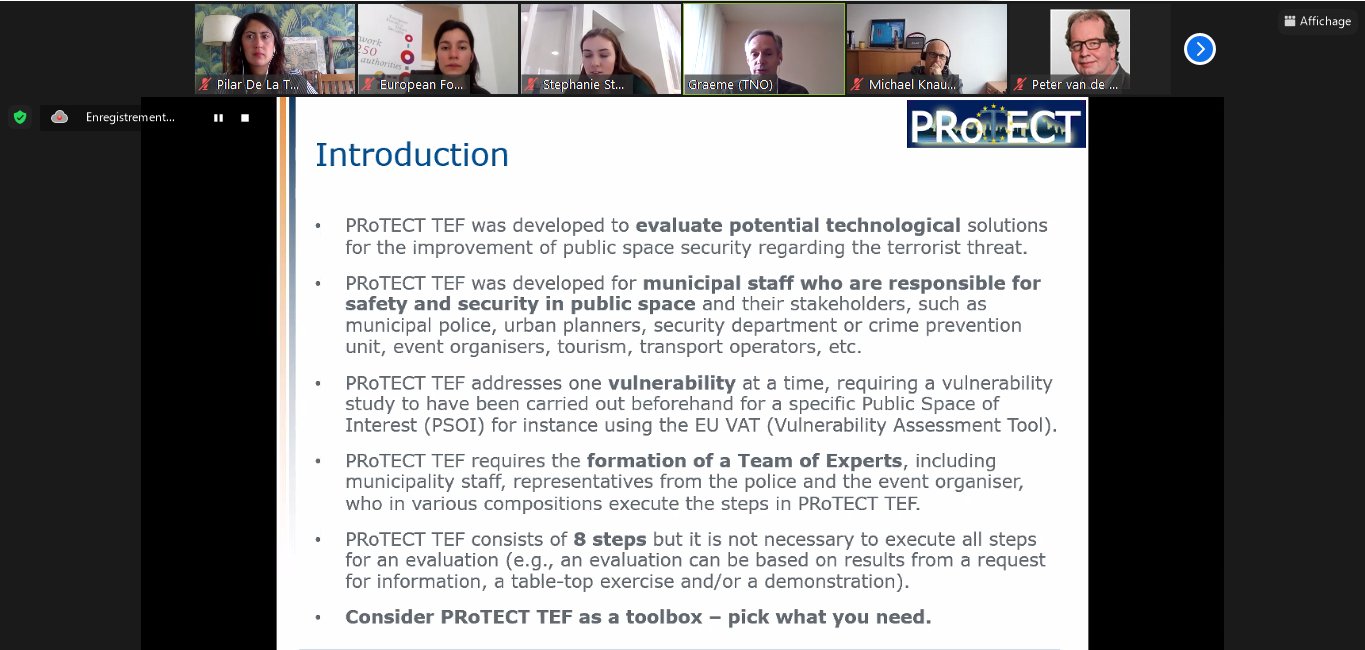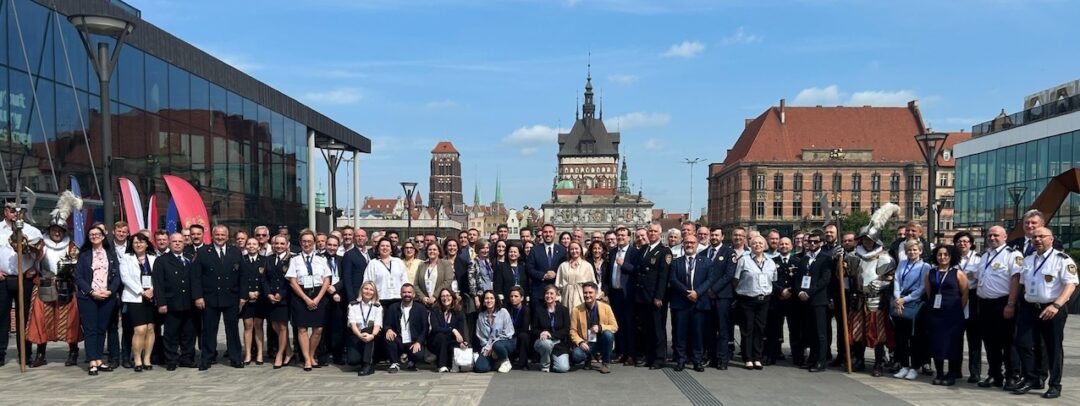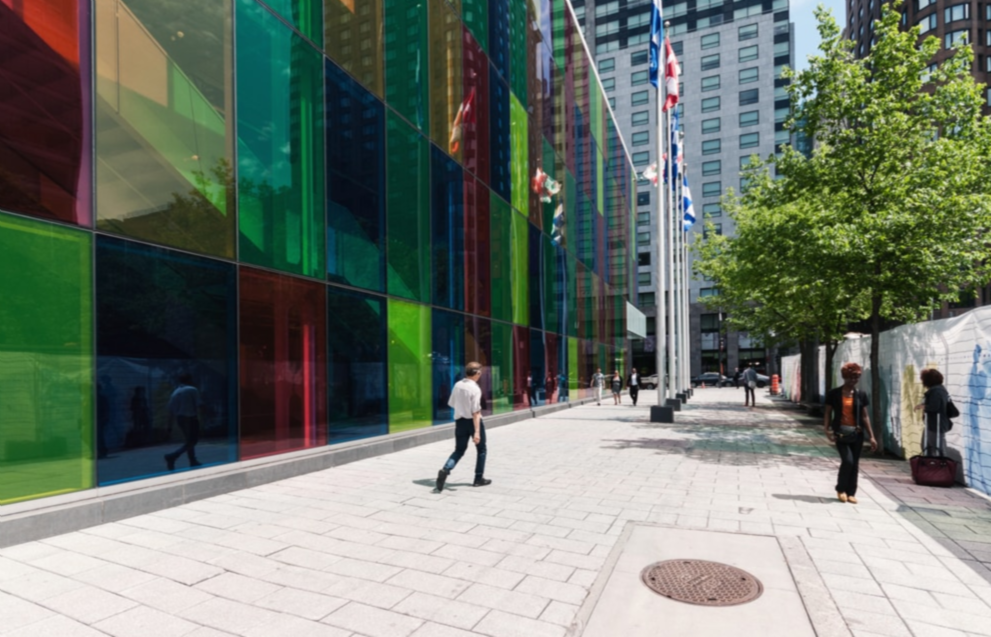Paris, France, April 2021 – As part of the PRoTECT project in which it is a partner, Efus organised a web conference on the considerations cities should take into account when choosing technologies to protect their public spaces, on 17 March.
The event, the second in a series of three online conferences on the protection of public spaces and ‘soft targets’ (such as shopping venues, schools or transport systems), explored the challenges local authorities face when acquiring new technologies. How to evaluate technologies for the protection of public spaces? What are the needs of cities when choosing a technology? What information needs to be gathered about existing solutions on the market? What evaluation criteria need to be defined?
PRoTECT’s Technology Evaluation Framework (TEF)
Graeme van Voorthuijsen, from the Netherlands Organisation for Applied Scientific Research (TNO), presented PRoTECT’s Technology Evaluation Framework (TEF). This is a methodology that local authorities and local stakeholders such as the municipal police, urban planners or event organisers can use to select the most appropriate technologies to secure a public space, according to their needs.
Easy to use, the TEF is particularly helpful given the abundance of surveillance and security technologies, which can be overwhelming for local authorities. It requires the relevant authorities to have previously conducted an assessment of the public space’s vulnerabilities, which they can do using the European Union’s Vulnerability Assessment Tool (this tool was presented at the previous web conference, on 17 February).
Case study: Eindhoven
Peter van de Crommert, Manager of EU Projects at the Dutch Institute for Technology, Safety & Security (DITSS), which leads PRoTECT, presented a case study demonstrating the application of the TEF in Eindhoven. The Dutch city was one of five that tested the TEF, alongside Larissa (Greece), Malaga (Spain), Vilnius (Lithuania) and Brasov (Romania).
Eindhoven chose to apply the TEF in a square in the city centre where many shops and restaurants operate. Using the TEF methodology, it examined 35 solutions from providers from nine countries with the criteria of accuracy, compliance, reliability, security, ease of use, maturity, portability and maintainability. Five solution providers made the final list.
Proportionality, necessity and transparency
One of the main conclusions of the web conference was that even though technologies are increasingly abundant and efficient, they cannot be the only solution for safeguarding a public space. As Efus has long advocated, they must be part of a comprehensive security policy that takes into account all the characteristics of a public space, its role in the city and how it is used by people, and always be used ethically, especially concerning the respect of privacy and human rights.
As such, three basic principles must always be respected: proportionality – a technology must be applied to solving a specific problem; necessity – it should be considered as part of an overall security policy and combined with other actions; and transparency – it is crucial to consult citizens prior to deploying a technology and, afterwards, to inform them once it is functional/active.
> Read the minutes of the web conference on Efus Network here
> The third and final web conference of this series will be held on 28 April and will tackle the question: “How can technology protect public spaces and soft urban targets?”. Click here to register (free of charge)
> More information about PRoTECT on Efus’ website and on the project’s website





